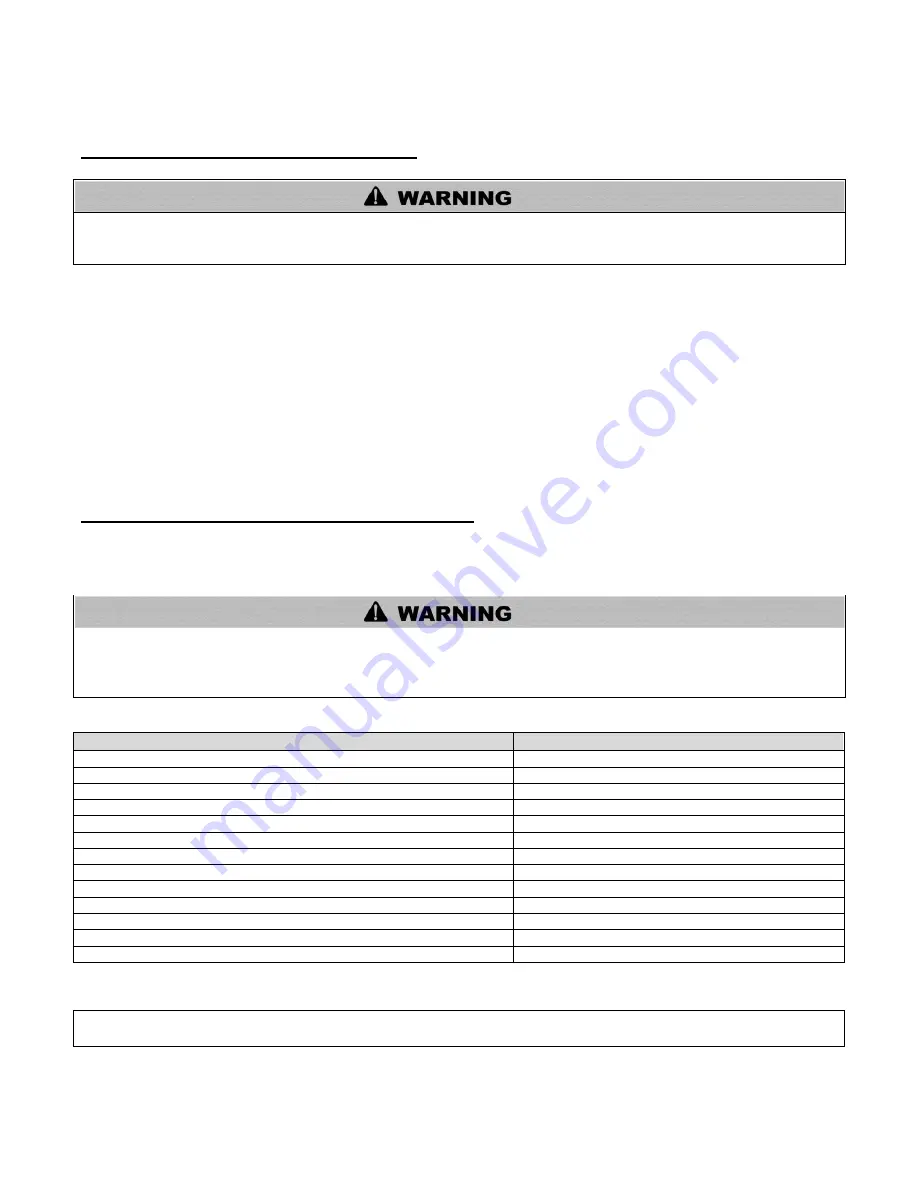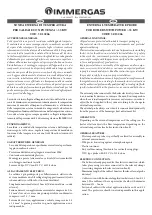
17
E. EXHAUST VENT AND INTAKE AIR VENT
Vents must be properly supported. The boiler intake and exhaust connections are not designed to carry heavy
weight. Vent support brackets must be within 1’ of the boiler and the balance at 4’ intervals. Venting must be
readily accessible for visual inspection for the first 3’ from the boiler.
The boiler is rated ANSI Z21.13 Category IV (pressurized vent, likely to form condensate in the vent), and
requires a special vent system designed for pressurized venting.
You must also install air intake piping from outdoors to the boiler flue adaptor. The resultant installation is
categorized as direct vent (sealed combustion).
NOTE:
To prevent combustion air contamination, see Table 1 in
this section when considering exhaust vent and intake air vent termination.
Intake and exhaust vents must terminate near each other and may be vented vertically through the roof or out a
side wall. Intake and exhaust venting methods are detailed in the Venting Section. Do not attempt installation
using any other means. Be sure to locate the boiler so intake and exhaust vent piping can be routed through the
building and properly terminated. The air intake and exhaust vent piping lengths, routing and termination method
must all comply with methods and limits given in the venting section.
F. PREVENT COMBUSTION AIR CONTAMINATION
Install intake piping for the boiler as described in the Venting section. Do not terminate exhaust in locations that
can allow contamination of intake air.
Ensure that the intake air will not contain any of the contaminants below. For example, do not pipe intake vent
near a swimming pool. Avoid areas subject to exhaust fumes from laundry facilities. These areas always contain
contaminants. Contaminated air will damage the boiler, resulting in possible substantial property damage, severe
personal injury, or death.
PRODUCTS TO AVOID
AREAS LIKELY TO HAVE CONTAMINANTS
Spray cans containing fluorocarbons
Dry cleaning/laundry areas and establishments
Permanent wave solutions
Swimming pools
Chlorinated waxes/cleaners
Metal fabrication plants
Chlorine-based swimming pool chemicals
Beauty shops
Calcium chloride used for thawing
Refrigeration repair shops
Sodium chloride used for water softening
Photo processing plants
Refrigerant leaks
Auto body shops
Paint or varnish removers
Plastic manufacturing plants
Hydrochloric or Muriatic acid
Furniture refinishing areas and establishments
Cements and glues
New building construction
Antistatic fabric softeners used in clothes dryers
Remodeling areas
Chlorine-type bleaches, laundry detergents, and cleaning solvents
Garages and workshops
Adhesives used to fasten building products
Table 1
NOTE: DAMAGE TO THE BOILER CAUSED BY EXPOSURE TO CORROSIVE VAPORS IS NOT COVERED
BY WARRANTY.
(Refer to the limited warranty for complete terms and conditions).
Summary of Contents for EL-110
Page 15: ...15 Figure 3 ...
Page 61: ...61 Figure 29 ...
Page 62: ...62 Figure 30 ...
Page 87: ...87 Figure 33 ...
Page 88: ...88 Figure 34 ...
Page 89: ...89 Figure 35 LP 293 A NOTE Parts listed on the following page ...
Page 94: ...94 ...
Page 95: ...95 ...
Page 96: ...96 MAINTENANCE NOTES ...
















































